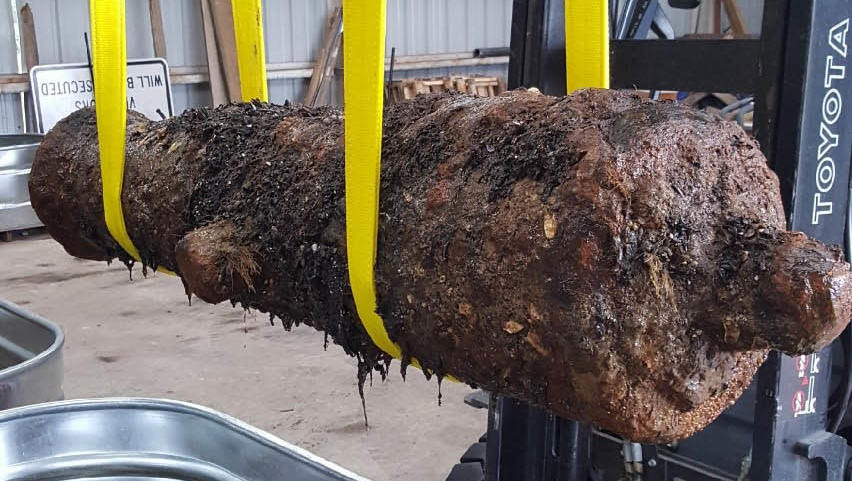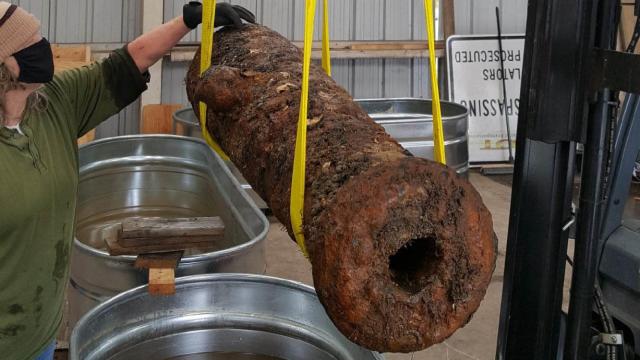In late February, the Army Corps of Engineers was working to deepen the Savannah River abutting the city of Savannah, Georgia. Hauling up huge gobs with their clamshell digger, the team came across two cannons, the origins of which remain unknown.
Based on their measurements, the cannons have been identified as nine-pounds guns predating the Civil War. (In terms of firepower, these guns were no joke.) They were pulled up near the historic site of Old Fort Jackson, alongside a piece of timber and an anchor from the same period. Only after the objects were set down on board could be separated from the muck.
“What you have left is whatever the dredge pulled up,” said Andrea Farmer, an archaeologist with the Army Corps of Engineers, in a phone call. “It could be anything from telephone poles, to old tires, to metal pieces, and then of course the cannon.”

There isn’t the first such discovery near Savannah. In 2013, parts of the CSS Georgia, a Confederate ironclad gunboat, were recovered from the same river. The Army Corps of Engineers is working with the United Kingdom’s Royal Navy on the new finds, in case they belonged to a British ship from the Revolutionary War.
Though Farmer didn’t speculate on the objects’ provenance, Royal Navy historians made their opinions known in a press release published last week. The British researchers believe the cannons and affiliated jetsam to have belonged to the HMS Rose, a royal ship scuttled as a blockship off Savannah in 1779, when the city was under siege (by Americans).
“It is exciting when artifacts from naval history are found,” said Commander Jim Morley, the United Kingdom’s assistant naval attaché in Washington, in the statement. “The discovery of an anchor, cannons, and ship timbers gives us a great opportunity to work with our U.S. colleagues and allies to help identify them.”

Most of the topside bits of the sunken ship were moved after the British skipped town several years later, but heavier pieces like the firepower and the anchor may have been deemed too cumbersome to retrieve. In any case, the Savannah River isn’t the most peaceful of watery graves. Depending on the time of day, the water will flow out to sea or in from it, complicating preservation conditions as well as archaeological surveys.
Going forward, the American team will focus on geophysical surveys and side-scan sonar, which is a ship-mounted technology that allows marine archaeologists to make images of the river bed. After that, divers will do a manual inspection of the bottom. The silty bottom and the to-and-fro of the current make visibility practically non-existent, Farmer said, hence the multiple surveys.
Whether or not the mothership to the cannons is identified, they have a temporary home, at least: water tanks at an undisclosed location on nearby Hutchinson Island, where they can be kept safe and semi-salinated in conditions that mirror the river bed on which they’ve sat for over a century.
